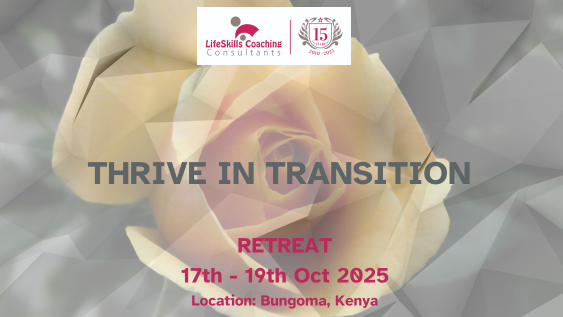Change is one of life’s constants, yet it can feel unsettling. Whether you’re stepping into a new role, navigating personal shifts, or facing the unknown, transitions offer a powerful opportunity for growth. This month, I’m sharing tools to help you embrace change with resilience and clarity—because you deserve to move forward with confidence.
Why Change Feels Hard (and How to Ease the Process)
The human brain is wired to prioritize safety and predictability. When faced with change, especially uncertain or unfamiliar situations, the brain perceives it as a potential threat. This triggers the amygdala, the brain’s emotional processing center, to activate the “fight, flight, or freeze” response (LeDoux, 2000). As a result, feelings of anxiety, resistance, or avoidance are common when navigating transitions.
Neuroscientific research shows that the anterior cingulate cortex detects conflicts between expected and actual outcomes, creating cognitive discomfort when routines are disrupted (Shenhav et al., 2016). This is why even positive changes—such as a new job or a life milestone—can feel unsettling.
Furthermore, the brain’s default mode network (DMN), responsible for mind-wandering and self-referential thoughts, tends to focus on past experiences and future uncertainties. This can lead to anticipatory anxiety—worrying about hypothetical outcomes (Raichle, 2015).
However, the brain also has remarkable neuroplasticity—its ability to rewire and adapt to new experiences (Doidge, 2007). By adopting intentional strategies, you can reduce resistance and approach change with greater ease.
Three Strategies to Ease Transition Stress
- Ground Yourself in the Present
When faced with change, the brain tends to fixate on “what if” scenarios, increasing anxiety. Grounding techniques help redirect your focus to the present moment, reducing feelings of overwhelm.
Try This:
Practice 5-4-3-2-1 Grounding: Identify 5 things you see, 4 you touch, 3 you hear, 2 you smell, and 1 you taste.
Incorporate mindful breathing: Inhale for 4 counts, hold for 4, exhale for 4—calming the nervous system. For an audio guide click here.
2. Reframe the Narrative
The brain’s negativity bias naturally focuses on potential Reframing involves shifting your perspective from seeing change as a danger to viewing it as an opportunity for growth. Here is a guided exercise to help you practice reframing.
3. Challenge Limiting Beliefs: Identify thoughts like “I can’t handle this” and replace them with empowering alternatives like “I am learning to navigate this step by step.”
4. Build a Support System
Social connection activates the brain’s oxytocin pathways, which reduce stress and increase feelings of safety (Zak, 2012). During transitions, sharing your experience with others can enhance emotional resilience. Identify 1-2 supportive people and schedule regular check-ins as you change, one of life’s constants that can feel unsettling.
Reflection Exercise: Mapping Your Change Journey
- What’s one change you’re currently navigating?
- What emotions arise when you think about this transition?
- What strengths have helped you navigate change before?
Join us for the Thrive in Transition Workshop on 17-19 October.
Secure your spot here: Thrive in Transition Retreat – Lifeskills Coaching Consultants
Whatever transition you’re facing, know this—you are capable of navigating change with grace and resilience. Each step forward is a testament to your courage.


